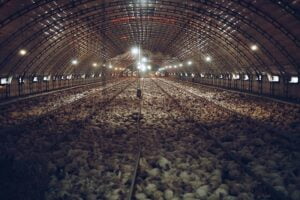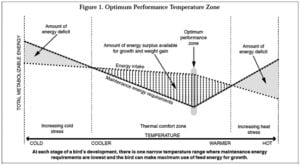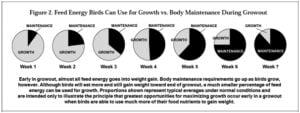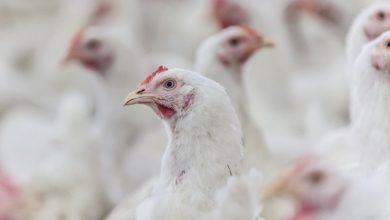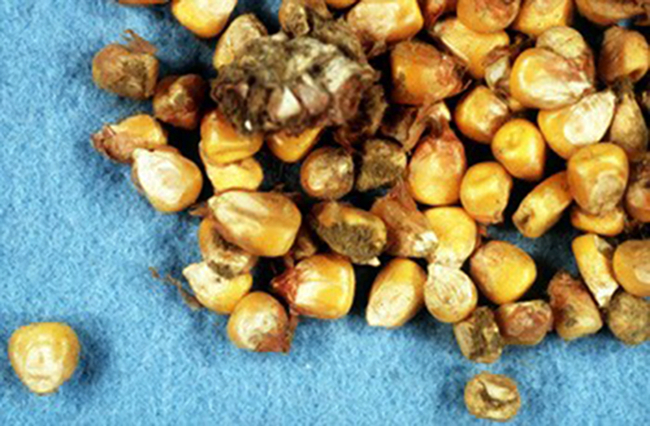HOW POULTRY HOUSING CAN REDUCE STRESS AND OPTIMIZE PERFORMANCE
Author: By James Donald, P.E. Professor & Director of the National Poultry Technology Center, Biosystems Engineering Department at Auburn University, in Alabama, USA
In this guest blog, James Donald of the National Poultry Technology Center at Auburn University shares his thoughts on the role and importance of the poultry house and environmental control.
As an agricultural engineer who has specialized in poultry housing and environmental control for most of my career, one of the primary principles one learns is that the performance of birds has a tremendous amount to do with the physical environment surrounding the bird.
The value of stress minimization during all phases of production from the hatchery to the final shipping date is an important concept in antibiotic-free (ABF) and ‘no antibiotics ever’ (NAE) production. Stress allows many types of challenges to thrive in birds, weakening their immune systems, causing sickness and the need for treatment.
Proper air quality and air temperature have been two factors at the basics of good production and good environmental control. However, the concept of minimizing stress needs to be expanded beyond just proper temperature and air quality.
Tunnel housing has overturned old rules
Poultry scientists, veterinarians, primary breeders and others have long published and used ideal temperature curves for rearing their birds. And, until the mid-1980s when tunnel ventilated poultry houses began to become very popular in the United States, the idea of maintaining perfect target temperatures was one of the utmost guiding principles in rearing birds.
To a lesser degree, humidity was considered an important factor, but being at the correct temperature seemed to be the first axiom of good environmental control with rearing temperature adjustments made for relative humidities that were above or below the ideal humidities of between 50 to 70%. In pre-tunnel ventilated poultry house rearing, an old rule of thumb often used was that if temperature (in degrees F) + relative humidity exceeded 160, birds were in heat stress. This old rule does not fit tunnel housing applications in use today.
Understanding Thermal Neutrality
If one examines the methods of heat transfer to or from a bird, we know that convection, conduction, radiation and respiration are the four primary methods. In instances of good environmental control, conductive heat transfer is often negligible. Birds must maintain thermal equilibrium if they are going to grow and gain or reproduce efficiently:
• Convection
• Conduction
• Radiation
• Respiration
Thermal equilibrium does not mean being at the correct target ambient air temperature. While ambient air temperature is a big factor, thermal equilibrium means that the amount of heat generated by the bird (primarily from the digestion of feed ) is released or dissipated in a manner to not cause the bird to experience stress or burn calories in doing so.
An ideal state of thermal equilibrium would mean that the bird’s heat generation and its dissipation were in balance, with the least amount of calories being burned for body maintenance functions. A panting bird can be dissipating the heat that is generated from within the body, but it won’t be doing it efficiently and some of the ingested feed calories will be “wasted” by spending that energy on the panting process. For cold birds to maintain equilibrium, calories are often burned to maintain warmth, thus robbing the bird from maximizing the number of calories available for growing and gaining or reproduction. In both cases, the bird is likely to be in a stressed condition.
Example of accelerated convective heat removal
In many of our classes or lectures, we often use the example of what is a perfect temperature for a 5 lb (2.27Kg) bird. Some might say about 70F (21.1C). In still air in a humidity range of 50-70%, this bird could likely be at perfect thermal equilibrium with minimum calories utilized for body maintenance functions.
However, the same 5 lb bird at 86F (30 C) in a 400 fpm (2 m/s) breeze might also be at thermal equilibrium with very low calories for body maintenance functions, eating, growing, and gaining just the same as the 5 lb bird at 70 F in still air. Body maintenance calories are similar to the comfortable bird in still air. This is an extreme example, but this accelerated convective heat removal is the one tool that is at the bedrock of tunnel ventilation and environmental control. It is a concept that is hard to grasp and hard to teach.
A MULTITUDE OF COMBINATIONS
There are hundreds or even thousands of combinations of temperature, air velocity and relative humidity that might prove out to be very efficient for growing and gaining with minimum body maintenance, and thus minimum stress.
Figure 1. Optimum Performance Temperature Zone
There is no exact formula, but an abundance of guidelines, and the final indicator is bird behavior through observation, and then the poultry house management to optimize this principle of optimum comfort zone, minimum body maintenance and minimum stress. This principle of thermal neutrality can be used in brooding and in all phases of growing broiler, broiler breeder pullets and broiler breeder hens.
Figure 1 is a graphic illustration of this concept, and is a concept that every poultry house flock manager must understand.
The environmental controller might be right on the target ambient air temperature setting put into the program, but it must be adjusted or tweaked for the highest level of growing, gaining, performance and stress minimization.
Stress Minimization 24 Hours Per Day, Every Day
The maximum growth potential of the day-old chick is determined by the breed chosen and is part of the bird’s genetic programming. This maximum potential is etched in stone upon arrival at the farm. (Read The Importance of Day Old Chick Quality).
However, whether or how far this growth potential is actually realized depends largely on the quality of the broiler house and the quality of the broiler house environmental management. When birds are unstressed by temperature variations, poor air quality, wet bedding or disease, they are able to maximize their growth by taking in adequate feed and water.
Environmental management is the key to achieving the grower’s goal of achieving maximum flock live weight in the shortest time frame and at least cost.
Concept of Body Maintenance
Another key point to understand about the process of converting feed to broiler meat is that birds have a strict priority system dictating that feed nutrients always go first to satisfying body maintenance functions, such as maintaining internal body temperature.
The feed nutrients that can be used for growth and gaining weight are only the amounts left over after the bird’s survival needs are met. Under conditions such as severe heat or cold stress, feed/water deprivation, respiratory stress or disease, a broiler flock may divert feed entirely to maintenance and gain little or no weight during a 24-hour period.
If body maintenance functions cannot be met, the bird is open to infectious agents and sickness. So, in other words, for example, a forty-day old broiler must meet its maintenance requirements before it can become a 41-day broiler by weight. This is why we must strive to maintain an optimum stress-free environment for birds, in which they have to use the least amount of feed for maintenance, and can use the most feed nutrients for weight gain.
The poultry house design and the environmental control mechanism must be high precision tools to do this if we are going to extract the maximum genetic potential that is available.
As mentioned above, the bird’s internal heat balance is the most critical factor in maximizing growth. When the surrounding air temperature is too cold, the bird has to use feed energy just to keep itself warm. If the air temperature is too warm and the air is still (no wind), the bird has to expend feed energy in panting or lifting its wings to shed excess internal heat and keep its own temperature from going too high.
Moving air over the bird (accelerated convective heat removal) helps carry heat away from the bird’s body. If still air is too warm for bird comfort, getting the air moving provides a wind-chill effect that creates a lower experienced or effective temperature. On the other hand, if still air is too cool for bird comfort, any wind (draft) will make the bird experience an even lower effective temperature and it will have to use more feed energy to stay comfortable. Bird growth is maximized only when the effective temperature — the temperature experienced by the bird — is within a certain optimum range, not too hot and not too cold, as shown in Figure 1. Effective temperature cannot be measured.
Bottom Line
Whenever two similar broiler flocks show a marked difference in overall performance, the bottom line is that the difference in performance will be the result of a difference in body maintenance requirements.
Figure 2. Feed Energy Birds Can Use for Growth vs. Body Maintenance During Growout
The specific causes might be identified as temperature extremes, drafts or chills, which drain heat away from the bird’s body, better or poorer air quality, different feeding/drinking patterns, infectious causes, etc. But always the flock with the lowest maintenance requirements will shift the most nutrients into growth, which will be reflected in better overall performance. (Figure 2).
